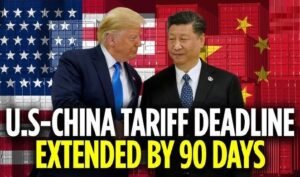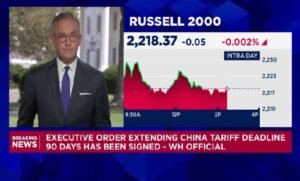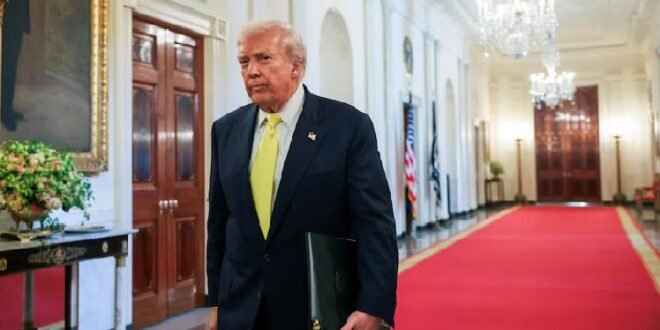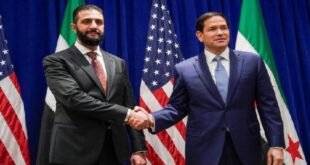13-08-2025
WASHINGTON/ BEIJING: The United States and China have extended their tariff deadline for another 90 days, preventing an escalation of the trade war between the world’s two largest economies, with markets rallying after President Donald Trump announced the pause.
 With the extension, the imposition of higher tariffs on China will be suspended until November 10, with all other elements of an existing truce which was set to expire on Tuesday to remain in place.
With the extension, the imposition of higher tariffs on China will be suspended until November 10, with all other elements of an existing truce which was set to expire on Tuesday to remain in place.
“The United States continues to have discussions with the PRC to address the lack of trade reciprocity in our economic relationship and our resulting national and economic security concerns,” Trump’s executive order stated, using the acronym for the People’s Republic of China.
China’s Ministry of Commerce issued a parallel pause on extra tariffs early on Tuesday, with the state media reporting that “a measure to further implement the important consensus reached by the two heads of state” would provide stability for the global economy.
So, how significant is the second extension of the tariff truce, and will the two countries sign a trade agreement to prevent a trade war?
What are the terms of the pause?
Beyond the date extension, a fact sheet posted by the White House on Monday didn’t detail any modifications to the trade truce agreed in May. China, in a similar statement, said it would also extend its tariff suspension for 90 days.
On May 11, the two sides agreed to a 90-day tariff pause. From early April until then, US import levies on Chinese goods stood at 145 percent, while Chinese tariffs on US exports were 125 percent, rates that resulted in a virtual trade embargo between the two countries but the tariff truce agreed to in Geneva, Switzerland, lowered the temperature by temporarily slashing US tariffs on Chinese imports to 30 percent, while Chinese levies on US exports fell to 10 percent.
 Beijing also agreed to resume some rare earth exports critical for the US manufacturing sector, including electronics, aerospace and cars.
Beijing also agreed to resume some rare earth exports critical for the US manufacturing sector, including electronics, aerospace and cars.
Following talks in Geneva, US and Chinese representatives met in London in June and then again in Stockholm, Sweden, last month. After the Stockholm meetings, US negotiators returned to Washington with a proposal that Trump extend the Geneva deadline past August 12.
In the run-up to this latest pause, it’s understood that Trump pushed for additional concessions on Sunday, urging China to quadruple its US soya bean purchases but analysts questioned the feasibility of his deal, and Trump did not repeat his demand on Monday.
How have stock markets responded?
Financial markets rallied on Tuesday, with Japanese and Australian equities hitting record highs following the trade truce announcement. Japan’s Topix benchmark rose 1.6 percent, as Australia’s S&P/ASX 200 climbed 0.2 percent.
In the US, futures tracking the S&P 500 and NASDAQ indexes edged up 0.1 percent. Meanwhile, oil prices increased. Brent crude futures jumped 0.4 percent to $66.9 a barrel, while US West Texas Intermediate crude futures were up 0.4 percent to $64.2.
Why has Trump been flexible with China on trade?
In recent weeks, US-China negotiations have been on a parallel track to other talks Washington has held with trade partners, as it moved to implement sweeping “reciprocal” tariffs as well as industry-specific levies on August 7. (Int’l News Desk)
 Pressmediaofindia
Pressmediaofindia




